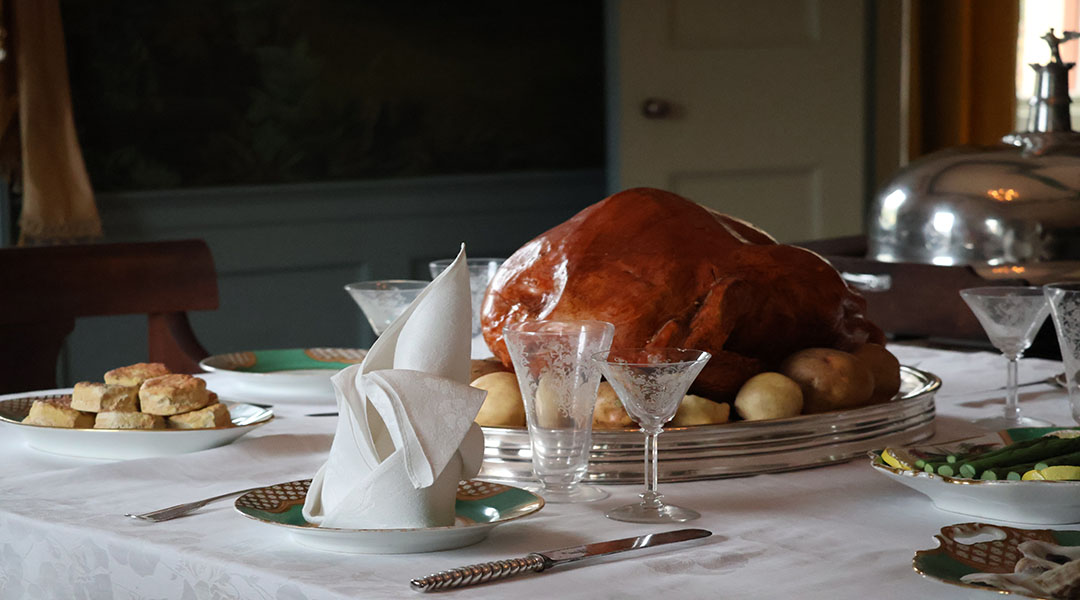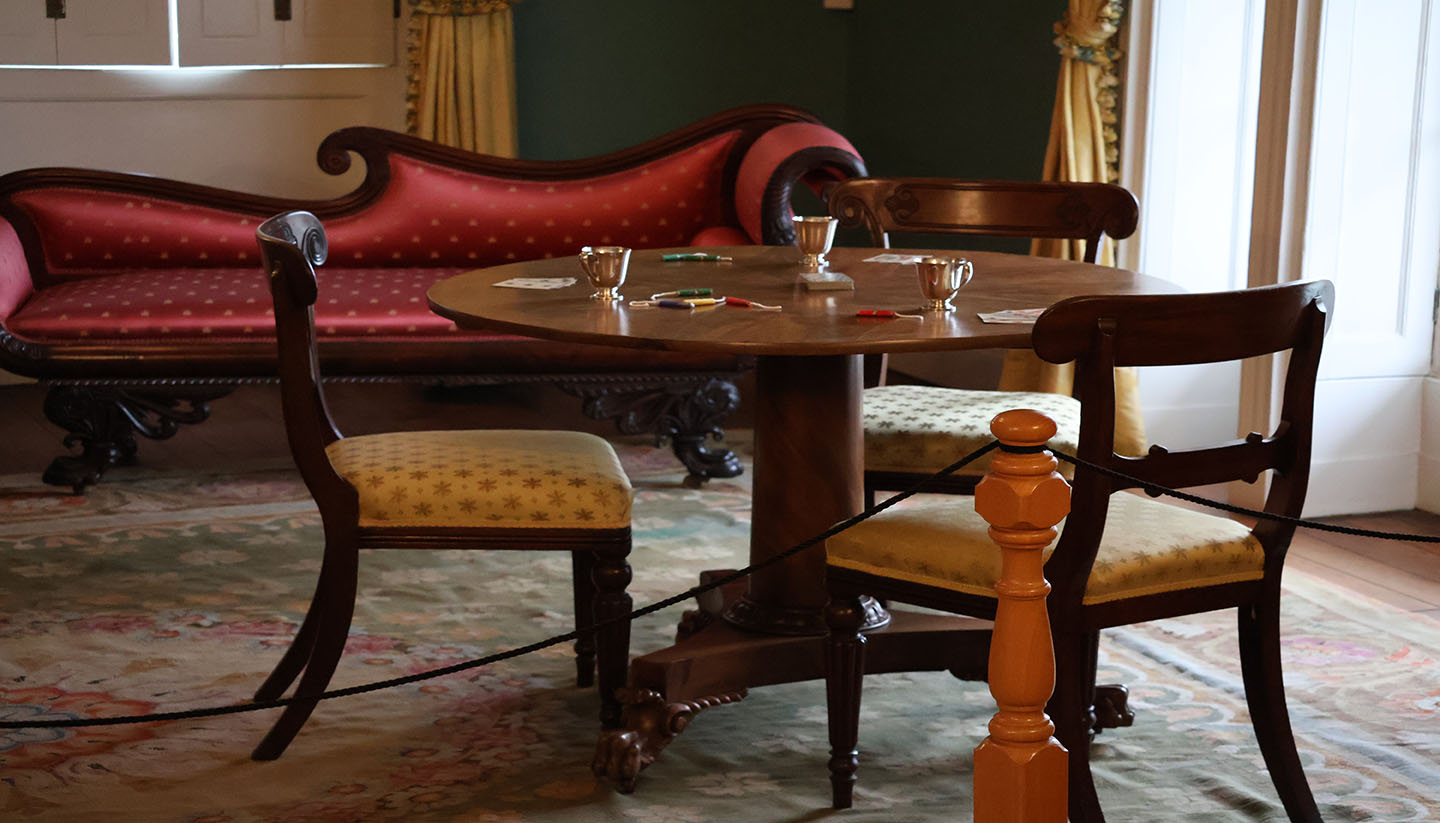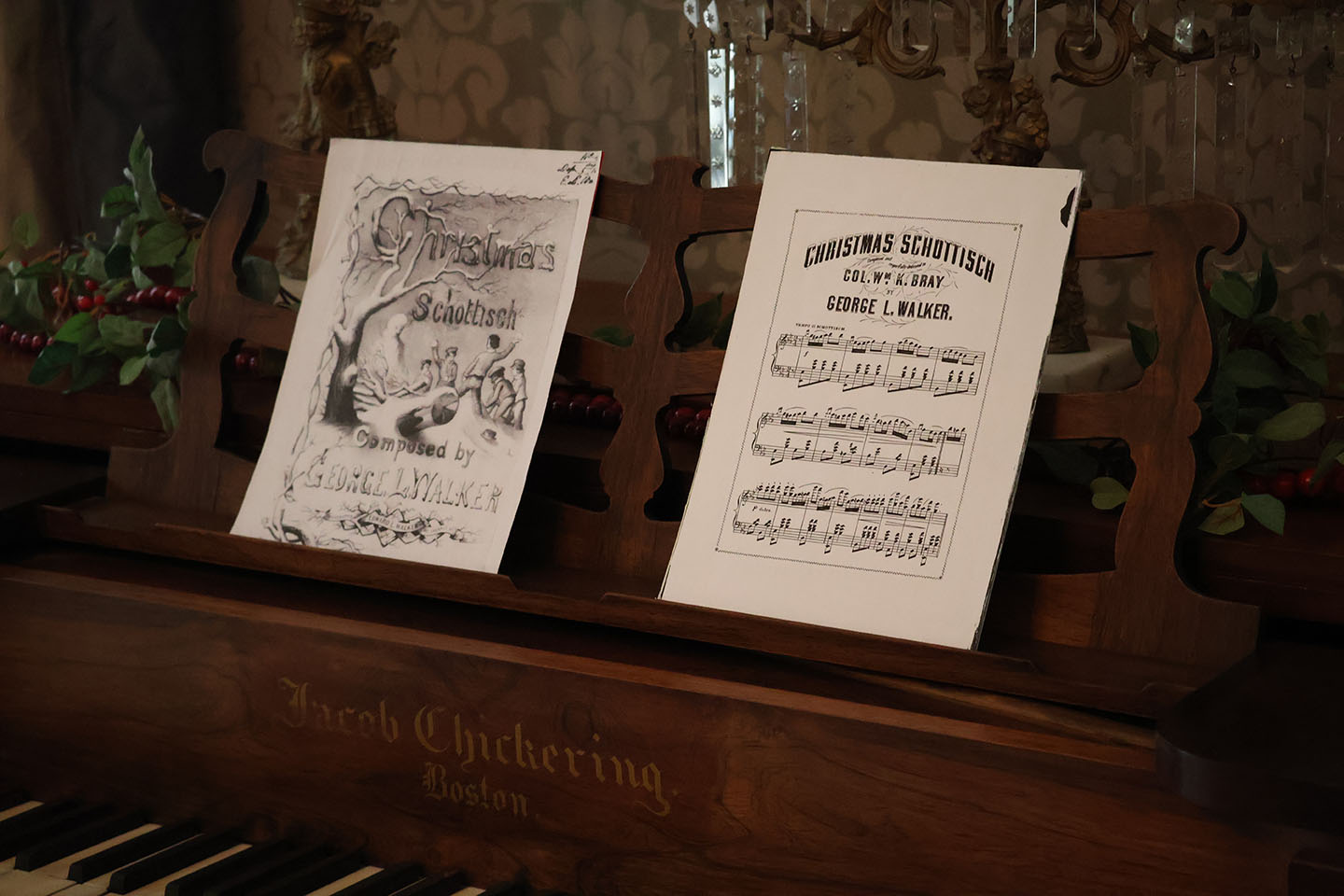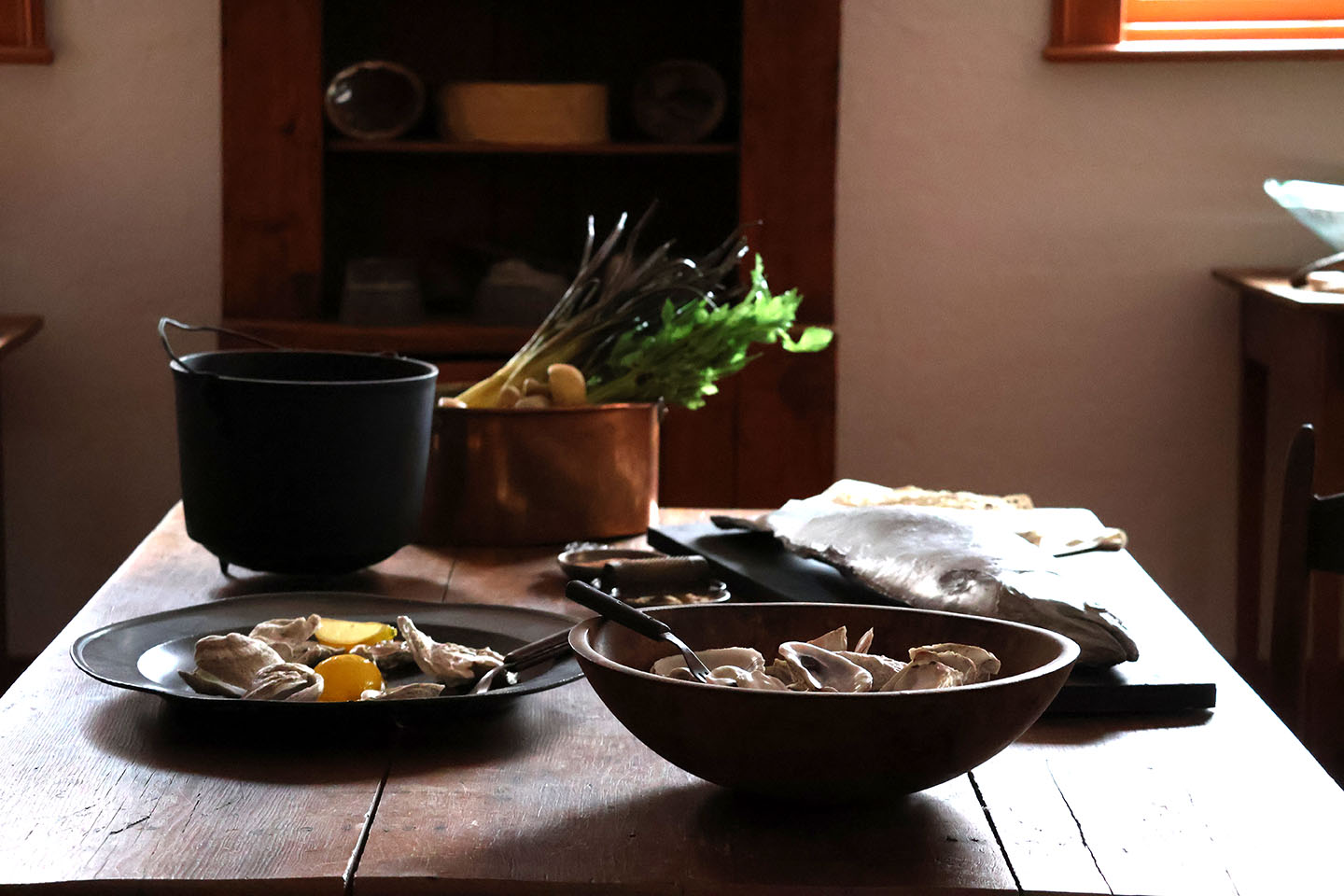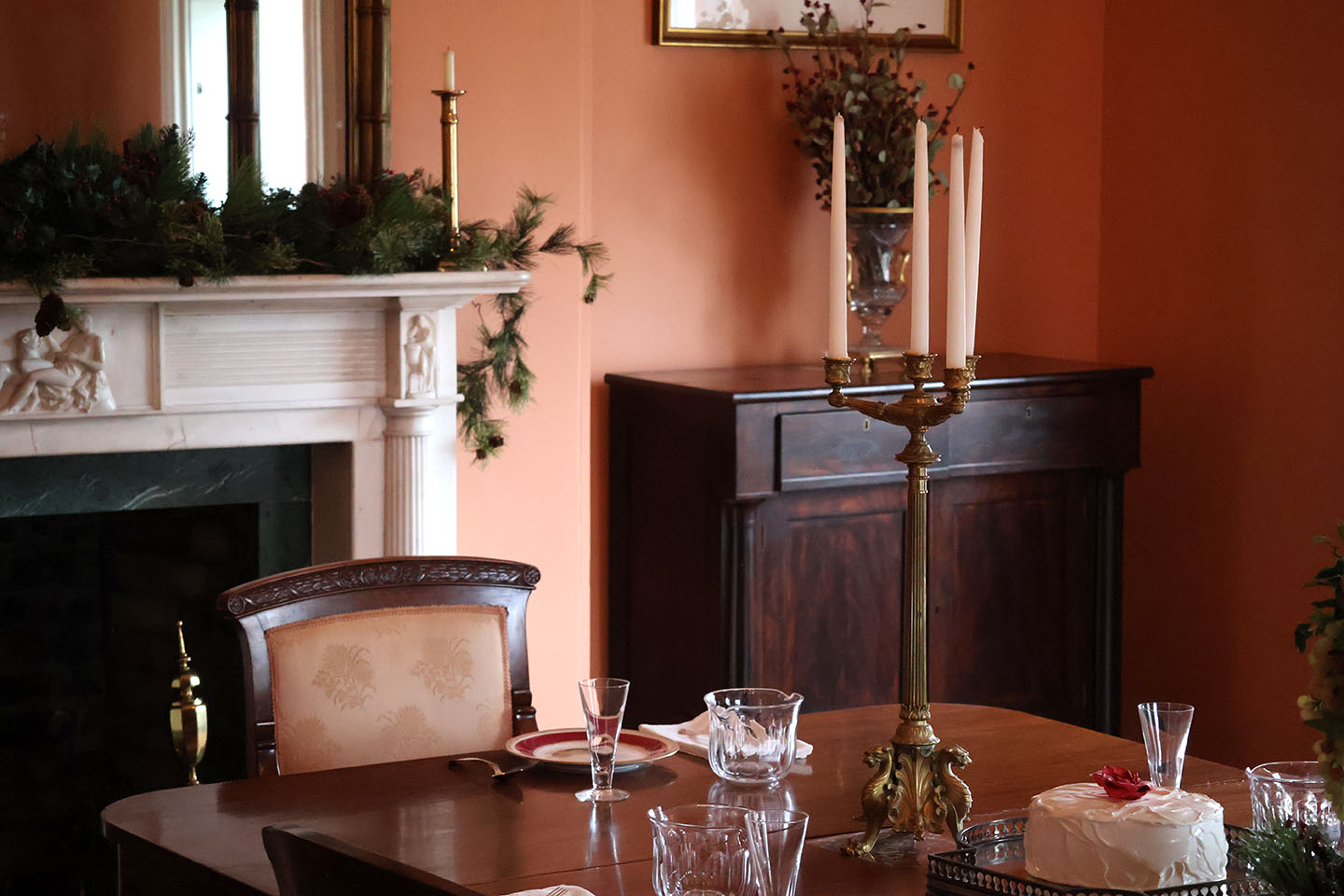A traditional holiday meal on the dining table of the Hampton-Preston Mansion and Gardens (Photos by Caroline Evans/Carolina News & Reporter)
In rooms that have long been empty, the team at Historic Columbia brings history to life through traditional decorations and artifacts that tell a story.
And the organizations’s historic homes are now all dressed up for the holidays.
The Robert Mills House was constructed in 1823 for the family of Ainsley Hall, a wealthy Columbia merchant. Hall passed away before the construction was complete. Even though the Halls never lived there, it is decorated how the team at Historic Columbia imagines they would have celebrated the holidays in the 1820s.
The home rests comfortably in a time before Christmas trees and other modern holiday decor when the main celebration would occur on New Year’s Eve and consist of fireworks, liquor and party games.
Two-hundred-year-old game tables sit on casters so that they could be rolled away when the space was needed for something else, said Rachel Gregor, the collections manager at Historic Columbia.
As the tour moves from the living spaces to the working pantry a floor below, Katharine Allen, director of outreach and engagement, talks about what New Year’s Day was like for enslaved people in the home. The holiday was called Heartbreak Day, because it was often the day when contracts would end and enslaved families would be separated as some were sent to other homes to work, Allen said.
In the pantry, no historical detail has been spared — fruits local to Columbia sit on tables next to silverware that slaves would have been polishing while preparing oyster stew for the New Year’s Eve feast.
The other historic house available for holiday tours is the Hampton-Preston Mansion just across the street.
It was built in 1818 by the Hall family as well, then sold to Wade Hampton I. Hampton was “… known as one of the South’s richest planters and at one time its largest enslaver,” according to the Historic Columbia website. After Hampton’s death, the estate went to his wife, Mary Cantley Hampton and their daughter Caroline Hampton Preston.
The decor in the mansion is set in 1850, when the home was occupied by a dozen Hampton-Preston family members. It features more of the holiday decorations that visitors might associate with Christmas today, including a Christmas tree with presents under it.
The parlor is set as if the Hampton family was entertaining for the holidays with eggnog in silver cups. Sitting on the table is a pickle dish with the Hampton family crest. And the walls of most rooms feature Hampton family portraits.
As visitors move to the dining room they will see a table set to be historically accurate, straight from a diary entry by one of Mary Hampton’s close friends. There is a large turkey, oysters, biscuits and other delicious entrees and sides.
The home has experienced expansion and downsizing over the years.
In the office space, there are photographs of enslaved people as a reminder that even city homes had slaves.
Laid out in the office are packages of gifts enslaved people were likely to receive during the holidays like muslin cloth, shoes, sugar and molasses.
The living room holds a tree that has candles as lights, with presents underneath. The top of the square grand piano displays Christmas carol sheet music. And a corner chair has a prayer book opened to a prayer about Christmas.
The holiday offerings includes tours of both the Robert Mills House and the Hampton-Preston Mansion. The tours are happening through Dec. 30, and visitors are able to see both homes for the price it normally costs to view one.
For more information and to purchase tickets visit Historic Columbia’s website.

